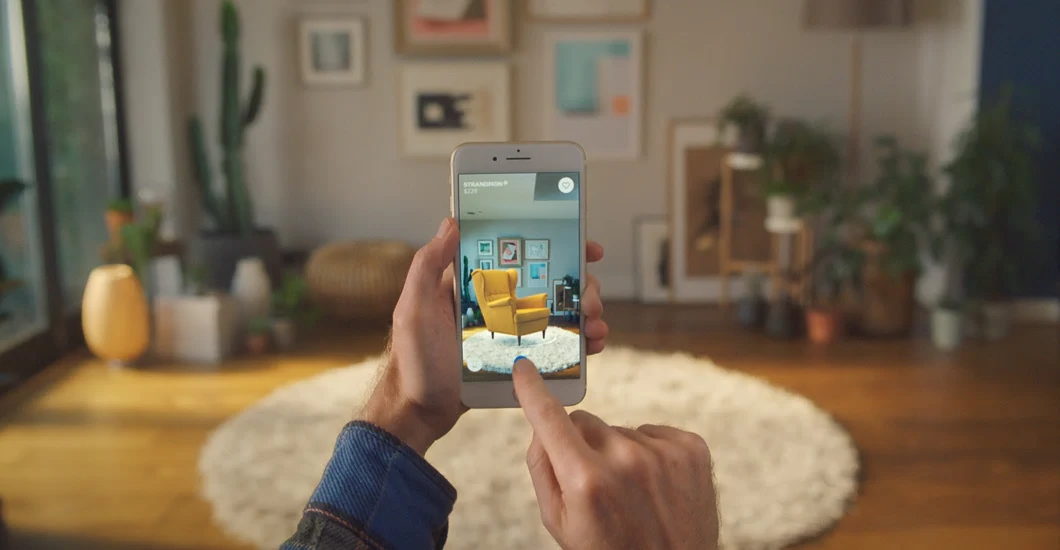How many times have you been shopping online and wished you could try before you buy? Or wish you were shopping with your besties?
In 2020, more retailers are delivering on this desire with life-like and socially focused augmented reality.
Augmented reality isn’t a new technology. Remember the Pokemon Go phenomenon? If not, well, most of us have played around with the plethora of Instagram and TikTok filters for a fun selfie, but in terms of augment shopping experiences, brands have been slow to turn AR’s pull factor into sales.
Due to the need for mass social distancing in 2020, augmented reality is finally showing off its eCommerce potential. The Iconic, Jaguar Land Rover and PE Nation are just a few businesses that have successfully integrated AR into their customer sales funnel. And the results are being seen on the bottom line. Online shopping has increased by over 20% year-on-year and 45% of customers are using their mobile to shop at least once a week (Paypal). Let’s dig deeper into AR’s ability to tap into social shopping.
I’d like my reality augmented
Augmented reality (AR) is an immersive-learning technology. For eCommerce brands, AR allows users to visualise and examine a product against a real backdrop. Unlike virtual reality, augmented reality uses the real physical world as the backdrop. It overlays objects on whatever you point the camera at like your body, living room, or your car.
Want a tiger in your living room? Use Google’s 3D objects to make it happen. Source: CNET.com
Augmented reality is at the forefront of social online shopping
Consumers are social creatures. We like to “see, believe and then buy” (BigCommerce). Social proof through endorsements, social media and product reviews have a huge impact on our product choices- once we see something we like, we seek out the opinions of others. Then we test its worth and value and make a purchase once we believe it’s right for us.
When you see products virtually superimposed over your own body and in an environment you trust, like your home, it’s easy to feel confident that it will meet your individual needs. This feeling of confidence increases when you can take a photo, share it and have your friends and family comment on it, or view other people doing the same.
Why is this trend important for eCommerce businesses?
Augmented reality that delivers a pesonalised experience and leverages social proof is the new way to build brand awareness. When AR let’s your customers “try on” a new product and experience a more realistic look and feel tailored to them, customers want to share their excitement with their community. In turn, sharable results boosts user-generated content and amplifies the visibility of your brand and products and increases the likelihood of a purchase.
As consumers preference intuitive, personalised, omni-channel experiences, the need to deliver a smooth customer journey across multiple touch-points is essential.
eCommerce businesses looking to AR shopping must consider the right experience for their customers which their business can sustain and scale. The the leading choices for deploying an augmented shopping experience are:
- branded mobile apps
- an AR filter on an existing social media platform (i.e: Facebook Messenger, Instagram or TikTok)
- an AR filter available via your eCommerce platform
Each has its pros and cons.
Who’s using augmented reality retail experiences?
Australian brands, P.E Nation and THEICONIC recently released their AR shopping experiences.
P.E. Nation, an active-streetwear brand introduced their first augmented reality experience using an Instagram filter. The company teamed up with the creative agency Andpeople to create a digital dressing room filter on Instagram. The custom-built AR filter lets you set a background image to try on a garment in an augmented reality seasonal setting.
It’s simple to use and fun to see yourself in a wintry wonderland, imagining you’re setting off on an adventure, however the drawback of the easy to deploy Instagram AR filter is that it’s not one-click shopable: potential shoppers must return back to the Instagram account to shop the product, or link out to the website and find the product.
Source: bandt.com.au. P.E Nation & Andpeople create augmented reality Instagram filter
Another leading eCommerce brand, The ICONIC is using augmented reality to let customers try on sneakers. The ICONIC went with a branded app, called ‘Visualise’, available via app stores. The 360-degree sneaker visualiser already has over 50 styles and is the first of its kind in Asia-Pacific. Consumers who engaged with the mobile app were proven to spend more time and more money per purchase because they were already interacting in an all-in-one interface.
The drawback is that users need to be motivated to download the app and have the opportunity to be distracted while doing so. The initial product education advertising campaign targeted existing customers first, tempting them with people (not tech) focused video. The ad showcased the fun of shopping AR with your mates. The follow-up digital ad campaign focused on emotion and the ability to “try as you buy” without having to go back to the website or primary app rather than any interface design.
It’s retail therapy but make it augmented.
Source: Finder.com.au Visualise app by THEICONIC
Who chose the better route? Try them out and you be the judge.
Want more proof?
Here’s a list of the top augmented reality shopping experiences
- Ikea Place app lets you see Swiss furniture in your home, in real-size
- Sephora’s makeup and skincare tutorials app links shoppers to featured products
- Warby Parker lets you try on glasses and snap a pic you can actually see when you put your current specs back on
- Although not shopable, Morphilio’s Trace app which collaborates with designer furniture maker Knoll, creates visualisations so realistic you’ll want to upgrade your home
- Wanna Kicks drops a new sneaker every day and keeps sneakerheads itching for more
Leading eCommerce platform Shopify has introduced augmented reality capabilities with Shopify AR. Using Shopify AR, merchants are able to display 3D models or videos in their online store and create interactive shopping experiences. Merchants using Shopify’s plugin can bring their products to life and allow customers to experience a life-like version. It helps to deliver not only a wow factor experience, but it triggers an emotional connection to products earlier in the sales-consideration phase.
How can your ecommerce business use Augment Reality?
If you’re an eCommerce business or retailer struggling to solidify an emotional tie with your customers, AR should be at the top of your to-do-list.
This game-changing capability is elevating the consumer experience and given AR’s much-improved deployment options, will be adopted by more brands looking to deliver personalised, social and immersive shopping experiences while increasing sales.
We chatted to AR expert, Angus Stevens, Managing Director of Start Beyond, a leading augmented and virtual reality software and Member of Workit Spaces. Stevens has seen many eCommerce businesses increase sales once they implement AR technology.
“AR gives customers a personalised experience when they try on a pair of sunglasses in an environment they are comfortable in,” said Stevens. Brands are able to build trust and a closer connection once consumers see how a product will look and feel in their personal environment.
Angus Stevens, Managing Director of Start Beyond
He notes that more and more eCommerce businesses use augmented reality to grow their business.
Stevens says that you can apply AR to your existing assets or new assets to add another layer of value and product insight. “If an eCommerce business already has a mobile app, an AR plugin can easily be installed on the website and optimised for your browser.”
Ready to grow your eCommerce business?
Want to learn more about implementing AR for your eCommerce business? Sign up for our newsletter and get updates on the latest eCommerce trends.









